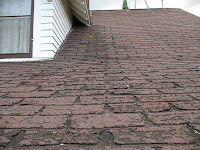One of the world’s largest and rarest flowering structures, the corpse flower is a pungent plant that blooms rarely and only for a short time. While it is in bloom, the flower emits a strong odor similar to rotting meat or, aptly, a decaying corpse.
There is a good reason for the plant's strong odor. “It all comes down to science," said Tim Pollak, outdoor floriculturist at the Chicago Botanic Garden. "The smell, color and even temperature of corpse flowers are meant to attract pollinators and help ensure the continuation of the species.”
Pollak explained that dung beetles, flesh flies and other carnivorous insects are the primary pollinators of this type of flower. These insects typically eat dead flesh. The smell and the dark burgundy color of the corpse flower are meant to imitate a dead animal to attract these insects.
“Corpse flowers are also able to warm up to 98 degrees Fahrenheit (36.7 Celsius) to further fool the insects,” Pollak told Live Science. "The insects think the flower may be food, fly inside, realize there is nothing to eat, and fly off with pollen on their legs. This process ensures the ongoing pollination of the species. Once the flower has bloomed and pollination is complete, the flower collapses."
Source: http://www.livescience.com/51947-corpse-flower-facts-about-the-smelly-plant.html










